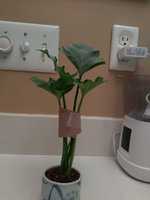Interesting, I had considered growing in pots sunk into the ground, but seeing as I won't be able to water them (bar 3 or 4 times in the spring/summer) I would be worried about the soil drying up.
Now there's a trick I haven't heard before! That's fantastic
@Forsoothe! , do you have any images of this process such that I can visualise it better? This might solve my concerns about wiring (which I know would be a
terrible idea if I'm not around to remove it during the growing season).
Thank you for the advice.

